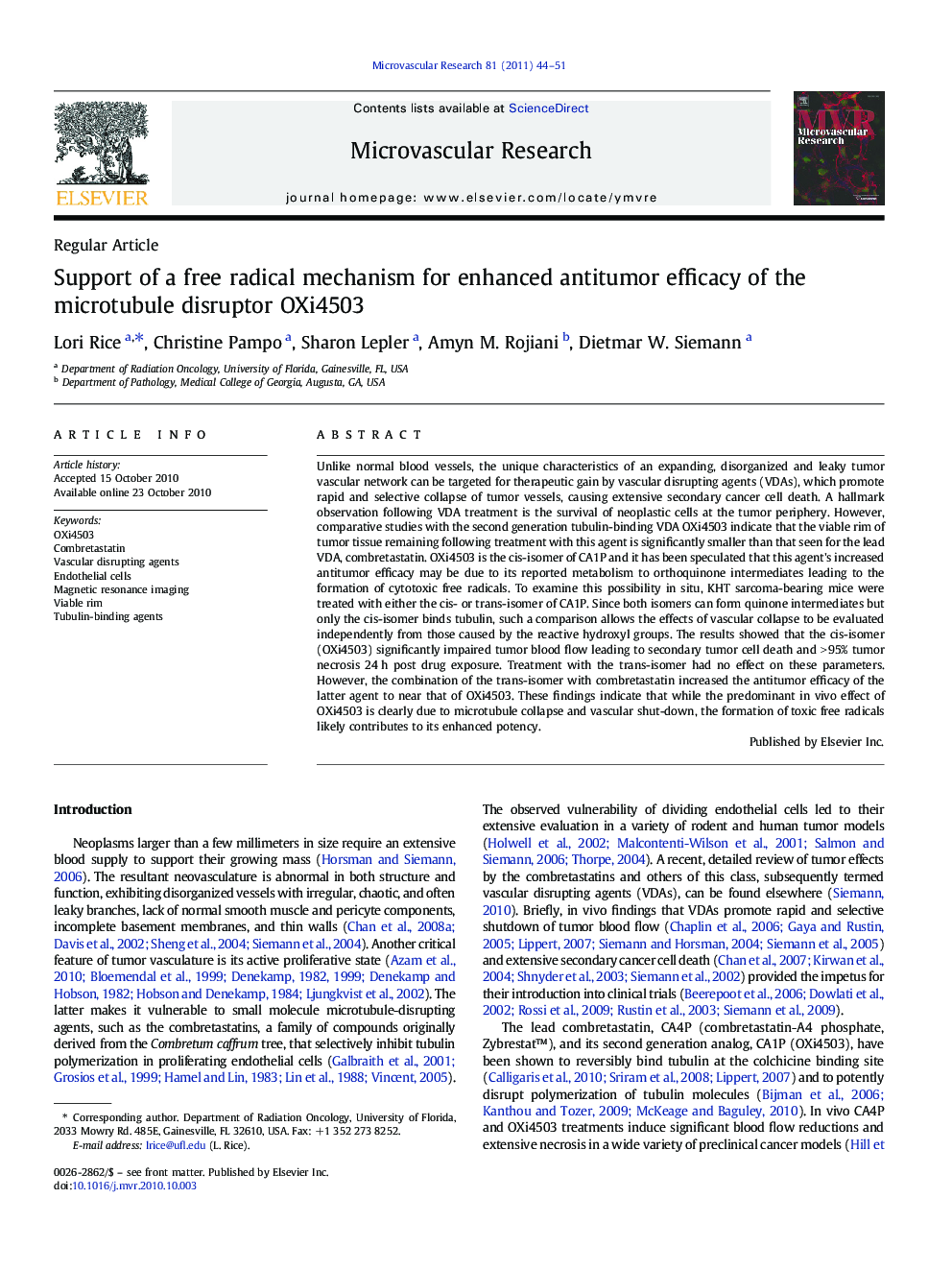| کد مقاله | کد نشریه | سال انتشار | مقاله انگلیسی | نسخه تمام متن |
|---|---|---|---|---|
| 1995015 | 1064948 | 2011 | 8 صفحه PDF | دانلود رایگان |

Unlike normal blood vessels, the unique characteristics of an expanding, disorganized and leaky tumor vascular network can be targeted for therapeutic gain by vascular disrupting agents (VDAs), which promote rapid and selective collapse of tumor vessels, causing extensive secondary cancer cell death. A hallmark observation following VDA treatment is the survival of neoplastic cells at the tumor periphery. However, comparative studies with the second generation tubulin-binding VDA OXi4503 indicate that the viable rim of tumor tissue remaining following treatment with this agent is significantly smaller than that seen for the lead VDA, combretastatin. OXi4503 is the cis-isomer of CA1P and it has been speculated that this agent's increased antitumor efficacy may be due to its reported metabolism to orthoquinone intermediates leading to the formation of cytotoxic free radicals. To examine this possibility in situ, KHT sarcoma-bearing mice were treated with either the cis- or trans-isomer of CA1P. Since both isomers can form quinone intermediates but only the cis-isomer binds tubulin, such a comparison allows the effects of vascular collapse to be evaluated independently from those caused by the reactive hydroxyl groups. The results showed that the cis-isomer (OXi4503) significantly impaired tumor blood flow leading to secondary tumor cell death and > 95% tumor necrosis 24 h post drug exposure. Treatment with the trans-isomer had no effect on these parameters. However, the combination of the trans-isomer with combretastatin increased the antitumor efficacy of the latter agent to near that of OXi4503. These findings indicate that while the predominant in vivo effect of OXi4503 is clearly due to microtubule collapse and vascular shut-down, the formation of toxic free radicals likely contributes to its enhanced potency.
Graphical AbstractEffects of cis-isomer of OXi4503 on normal endothelial cells in vivo and in vitro compared to the trans-isomer which lacks tubulin-binding activity, but forms reactive quinones. OXi4503 treatment reduces viable rim compared to CA4P treated mice, but treatment with CA4P plus trans-CA1P gives results similar to OXi4503.Figure optionsDownload as PowerPoint slideResearch Highlights
► OXi4503 yields greater necrosis and smaller viable rim than other VDAs, including CA4P.
► OXi4503 forms of reactive quinones and possibly direct cytotoxic effects.
► The trans-isomer of OXI4503 does not bind tubulin, but does produce reactive quinones.
► The trans-isomer does not affect tube formation or tumor vascular collapse in mice.
► CA4P plus trans-CA1P produces an anti-tumor effect similar to that of OXi4503.
Journal: Microvascular Research - Volume 81, Issue 1, January 2011, Pages 44–51